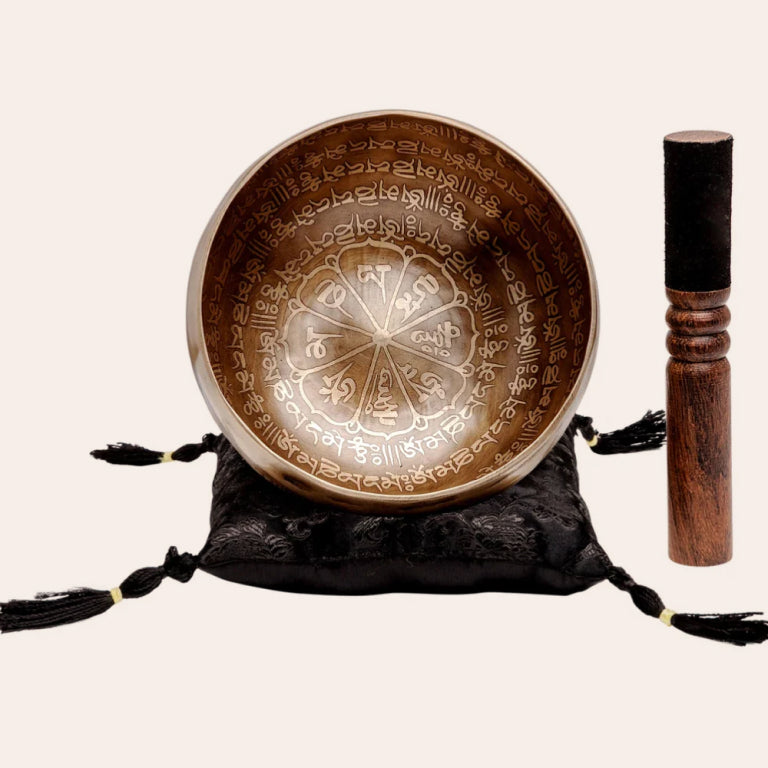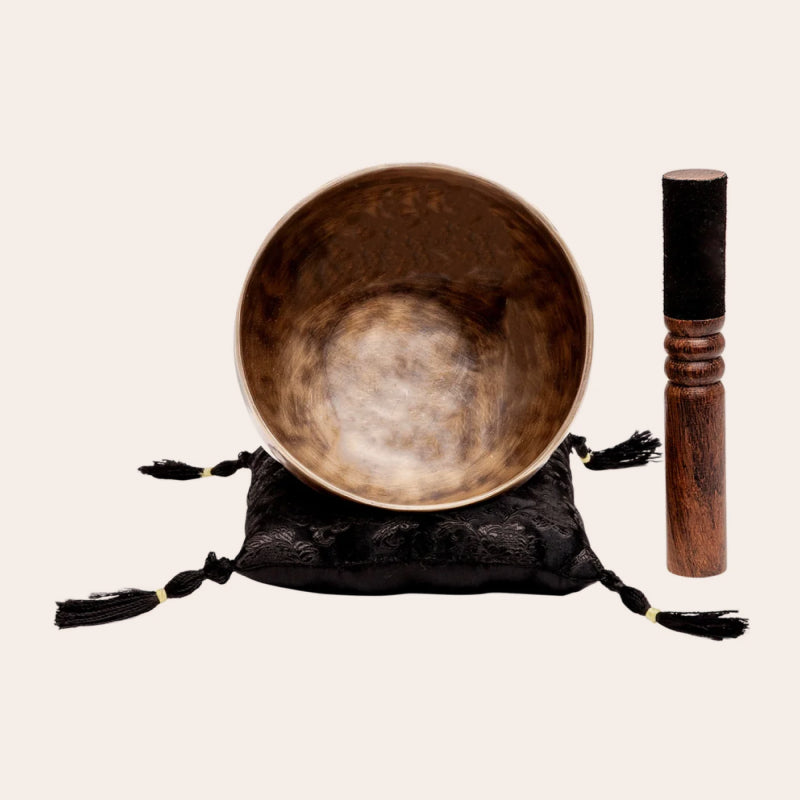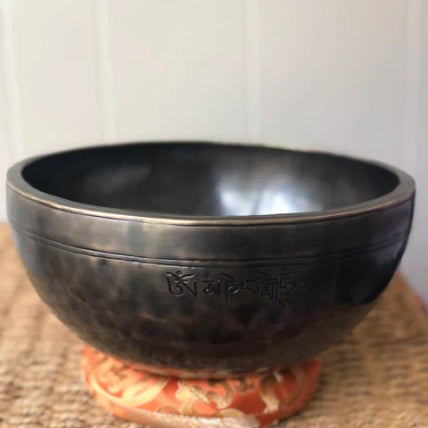So, how do singing bowls actually work?
The calming effect of Tibetan singing bowls on the mind is attributed to a combination of auditory, vibrational, and mindfulness elements.
Beyond just "knowing" that they work by listening to them and experiencing them, Here's a breakdown of how these factors contribute to a sense of calm.
Auditory stimulation and brainwave entrainment
The sound produced by Tibetan singing bowls is rich in harmonic overtones; it’s the main differentiating factor (beyond the obvious) between crystal and metal bowls.
The brain tends to synchronize its dominant frequency with external rhythmic stimuli, a phenomenon known as brainwave entrainment.
Put more simply, your brain “matches” external stimuli. This is why music being happy, calming or sad can so easily change your mood.
The tones of the singing bowl can induce a meditative state by guiding the brain into slower frequencies, such as alpha and theta waves associated with relaxation and meditation.
Vibrational Resonance and Somatic Resonance
The physical vibration of the singing bowl is not only audible but also tangible. As you hold or place your hands on the bowl, you can feel the vibrations.
This somatic resonance (somatic means things relating to the body, in terms of physical sensations or experiences) can have a calming effect on the nervous system and the body. The vibrations may help release tension, promoting a sense of relaxation.
Concentration and Mindfulness
Engaging with a singing bowl often requires focused attention. Whether you are striking the bowl or circling the rim with a and, the activity demands a degree of concentration.
This mindful focus redirects attention away from stressors and brings it into the present moment, fostering a sense of mindfulness.
You can’t hold your phone and play a singing bowl at the same time!
Synchronization with Breath
Many practices involving singing bowls incorporate intentional breathing.
Coordinating your breath with the sounds of the bowl can enhance relaxation. Deep, slow breaths promote a parasympathetic nervous system response, counteracting the stress-inducing effects of the sympathetic nervous system.
Ritual and Intention
The act of using a singing bowl can become a ritual, especially when accompanied by intention-setting or meditation.
One clear recommendation from The Ohm Store is to use the intention of “inviting the bowl to sing,” rather than trying to get the bowl to do something you want it to do.
These bowls are unique, in that they are handmade musical instruments not associated with “concert pitch” musical notes – meaning they don’t conform to the usual rules. For example, if we line up 4 different bowls all with a fundamental “G” note, they will still all sound different!
Rituals provide a sense of structure and predictability, which can be psychologically comforting and contribute to a sense of calm.
Closing
The work of tibetan singing bowls is simply another class of music, that empowers individuals to create a personal practice in the comfort of their own homes, without a musical background. They are the most democratic of musical instruments.
You can listen to the professionally recorded sound samples on our website, to experience them yourself!










